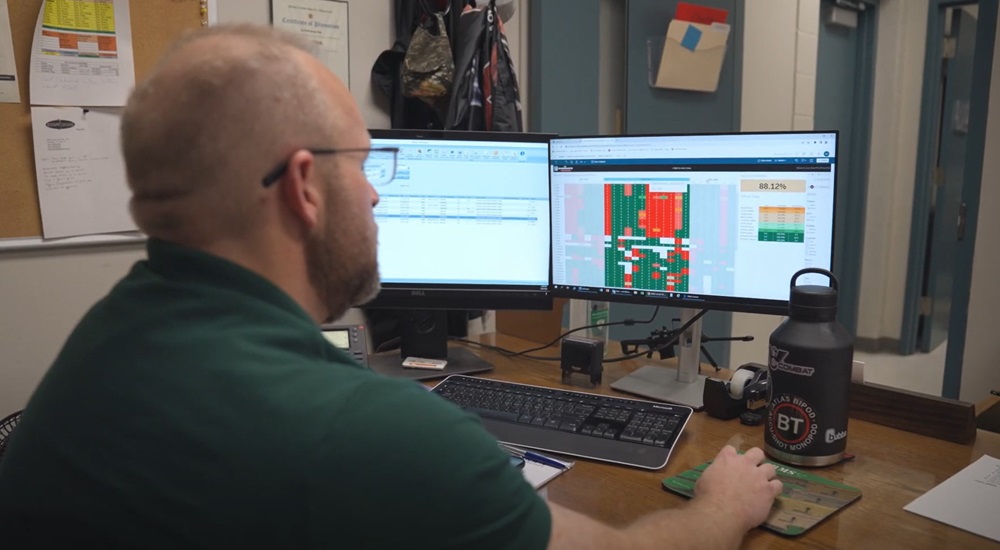The More Robust the Reporting, the More Accountable the Officer
“How on Earth did we miss that?” This question has likely crossed the mind of every corrections professional at one point or another, especially when it comes to being warned that your agency isn’t in compliance with internal policies or state standards. Whether it’s something as small as a broken cell mirror or as large as several unjustified missed security checks, out of compliance means out of compliance. Period.
Of course, some compliance requirements are easier to miss than others (such as a broken cell mirror compared to missed checks). Regardless of how minor or easily missable a discrepancy is, it won't pass a compliance inspection if it doesn’t align with the compliance guidelines your facility must meet.
This is precisely why staff need to know how to review the activities, movements, and all documentation captured within the walls of their facility. The ability to pull a report is one thing, but it’s another to know how to examine the data thoroughly and identify any red flags. This blog addresses how officer reporting capabilities can help increase the likelihood of meeting compliance while boosting officer accountability.
Improving Staff Accountability
One of the most prominent responsibilities of a corrections officer is to conduct thorough and timely security checks. In turn, one of the most important duties of a corrections sergeant, lieutenant, or jail administrator is ensuring that the corrections officers do their job. So, why do senior staff often discover that corrections officers sometimes don’t perform the most crucial responsibility of their role?
We’ve heard all the excuses. High turnover. Inexperienced staff. Burnout. You name it. And while all these factors may be true, they are not viable excuses to skip performing security checks. Unbeknownst to many, there IS a solution to combat all of these excuses and be proactive in locating and addressing areas of non-compliance: improve staff accountability.
Did you just experience a lightbulb moment?! Probably not, because of course improved staff accountability will smoothen out the bumps of any workplace challenges. However, improving staff accountability isn’t as simple as it sounds. It takes determination, perseverance, and encouragement to motivate officers to complete their jobs efficiently and effectively. But with all the responsibilities that officers already have their plates full with, it’s difficult to stay on top of every single task. Sometimes it requires a tool to help officers pinpoint errors or locate inconsistencies in their work patterns.
This was most likely something that your agency considered as they contemplated which inmate tracking system they would select to partner with. They probably weighed the significance of the system’s included tools such as real-time syncing, streamlining workflows, capturing data, and understanding how they would impact staff accountability. One of the most prominent features that likely caught their attention and assisted in making their final selection was the system’s reporting capabilities. This is because having the means to track officer activity through a robust auditing report system gives an agency no other option than to promote staff accountability.

Limitations in Reporting Capabilities
Now, it’s important to note that not all inmate tracking systems on the market have strong reporting capabilities if they have any at all. Most platforms have the basic component of pulling a PDF report that shows the date range and location of where all checks were logged. Other platforms take it a step further and can run a report for late checks only. Fewer platforms go beyond and highlight the on-time checks in one color (typically green) and late checks in another color (typically red), and identify exactly how many minutes each check was late by, as well as how many checks were missed altogether.
These reporting capabilities seem like they’re good enough, right? But what happens on the rare occasion when there is a justifiable reason for the officer being late? Perhaps there was an inmate altercation that an officer had to interfere with at the exact time checks were due, or maybe an inmate was having a medical emergency. It’s not all that common, but sometimes missed checks are justified by another major event happening simultaneously.
In almost all correctional facilities, staff are required to document their late check justifications externally from their inmate tracking platform, typically because their platform is not advanced enough to capture this information. Late check justifications may be documented as a note in their log book, an email to a supervisor, or other methods.
More advanced systems, conversely, allow officers to log a late check justification on their handheld device at the point of responsibility. And if they forget to log it in the moment, officers can go back to their computer and add their justification. With this type of sophisticated technology, it’s easier for an officer to remember to add their justification to the system as soon as a late check occurs. Officers would no longer have to “hope to remember” to add it later separately.
With innovative technology, officers can log their late check justifications and supervisors can review all late checks and justifications in a single location with the option to add their comments.
Introducing Command Cloud
It’s important to note that the majority of inmate tracking systems in today’s market lack the proficiency to accommodate all of these functions. However, one system is an exception: GUARDIAN RFID’s Command Cloud. This technology allows for late check justifications while also generating summary reports that pinpoint exactly which officers are most frequently late in completing their checks. Moreover, it highlights the specific locations and hours of the day that are most commonly late.
And, this system makes it possible to view all this information (insert drumroll emoji here) in one single, consolidated report. Yes, that’s correct. This inmate tracking system exists and fulfills all the needs a supervisor could ask for. This particular system is Command Cloud, and by utilizing its Operational Intelligence data analytics platform, you can bring real-time meaning and clarity to your data across virtually every functional area of inmate management.
While there are several inmate tracking systems available to select from, only a few check all the boxes of meeting every reporting capability to exist, undeniably boosting staff accountability and efficiency and increasing the chances of meeting compliance requirements. Now, the choice is yours! Consider the functionality of your agency’s current inmate tracking system and determine if it’s time to switch to a more robust reporting system to help your overall staff and facility perform at their highest capacity.

